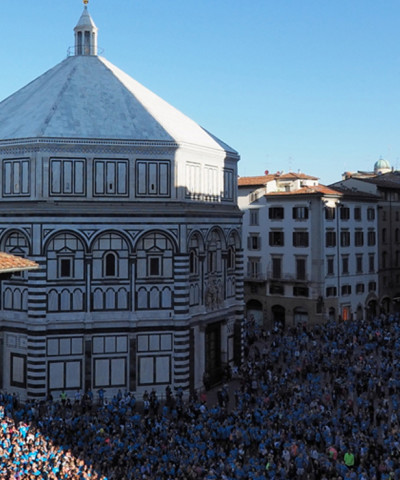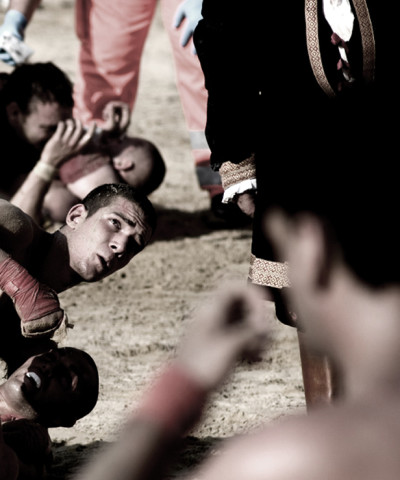Anish Kapoor exhibition at Florence
We find out more about the artist's works through an interview conducted by Palazzo Strozzi curator and director Arturo Galansino
Until February 4, Anish Kapoor is at Palazzo Strozzi: a show of monumental installations, intimate atmospheres and provocative shapes curated by Arturo Galansino. Here we bring you the intense conversation between the artist and Palazzo Strozzi’s curator and director on the eve of the exhibition’s opening.
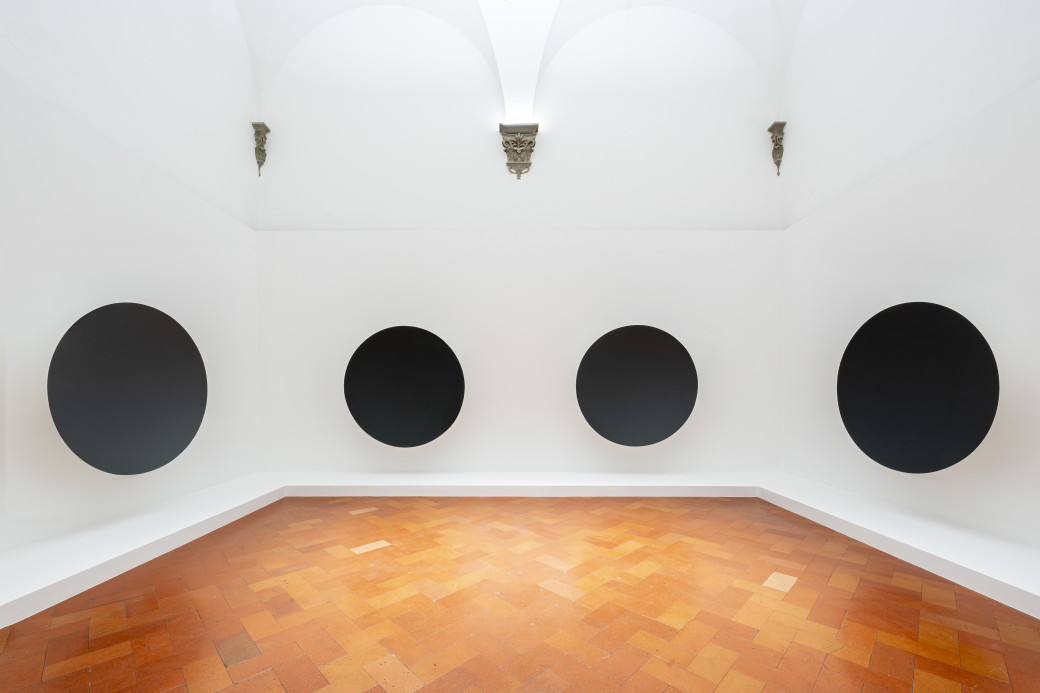 Anish Kapoor Gathering Clouds - photo Ela Bialkowska
Anish Kapoor Gathering Clouds - photo Ela BialkowskaYour relationship with Italy has a long and intense history, which led to the realization of major projects in several cities, including Naples, Rome, Milan and Venice. Now Florence hosts such a significant exhibition. Could you describe your bond with our country?
As you said, I have a long and intense relationship with Italy. In this country, I perceive a strong bond between everyday life and culture, exactly like in India where I grew up. I was recently walking through Venice and I noticed an image of the Virgin Mary on one side of a church. It immediately struck me that in Protestant countries, where I spent most of my life, the ‘feminine’ has been banned and the society is based on a male hierarchy. Italian Catholicism, instead, holds on to women like a psychic presence. This concept touches me deeply.
In the past, you have worked in contexts of great historical importance, such as the Versailles Gardens, Houghton Hall and Palazzo Manfrin, which was chosen as the headquarters of your Venetian foundation. However, it’s the first time you face the challenge of Florence and of an early Renaissance building such as Palazzo Strozzi, known for its rigor, symmetry and minimalism. Considering your deep relationship with architecture, how has this building, the symbol of humanist culture, inspired you in the selection of the works on show? And how does Void Pavilion VII, the new installation created for the courtyard, whose outside evokes the palazzo’s facades, interact with Palazzo Strozzi and its history?
Palazzo Strozzi is, as you said, symmetric. The succession of rooms is well-structured and rigorous. It is not easy to hold an exhibition in these rooms. Too much order inhibits the work’s engagement with the viewer. It has, thus, been necessary to interrupt the rooms’ order, by placing the works in a way that allows for alternative routes through the building. Void Pavilion VII is a formal structure which rhymes with the palazzo. It’s a small building designed to contain the vacuum and darkness, to make room for the unformed and the hidden. A place for the unheimlich: probably the opposite of what the builders of Palazzo Strozzi had in mind.
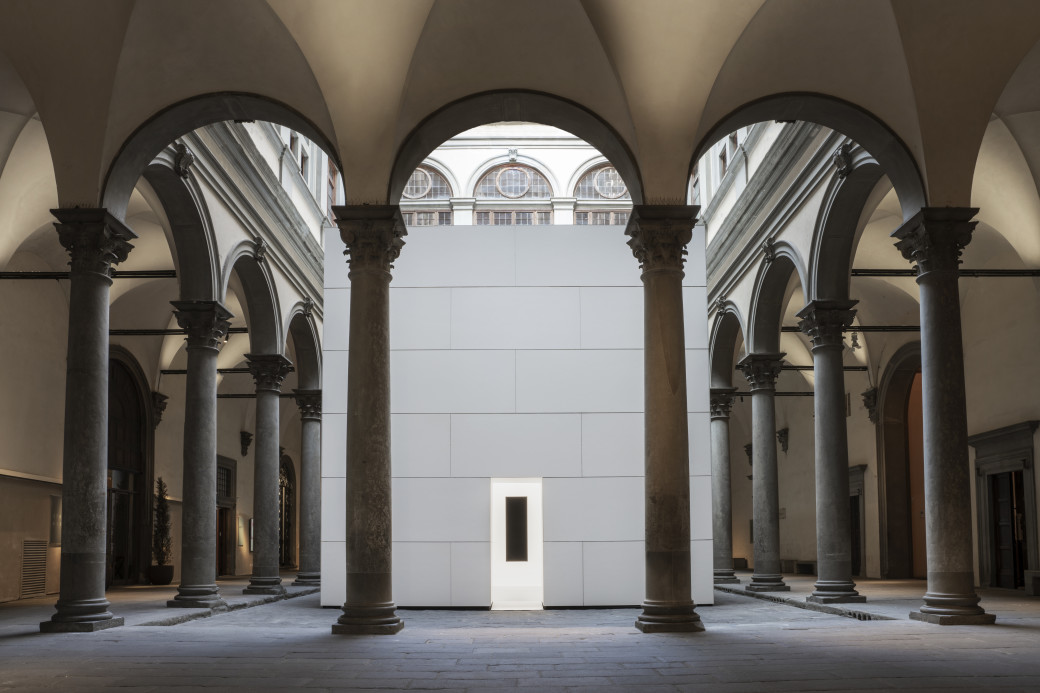 Anish Kapoor, Void Pavilion VII - photo Ela Bialkowska
Anish Kapoor, Void Pavilion VII - photo Ela BialkowskaYou often explore the themes of dualism and opposition, such as inside and outside, concave and convex, order and chaos, natural and artificial. Do you believe you will ever achieve a synthesis of these contrasting elements, or even go beyond them, in your works?
We live in the world of the opposites: day and night, male and female, positive and negative, life and death. Even our psychic world, as we know, is made up of opposites. My journey through objects has led me to believe that all objects reside in a material/immaterial dichotomy.
You artwork is often based on the pursuit of formal perfection, by making the “artist’s hand” disappear to elevate the material and transforming the works in eternal objects, nearly timeless, belonging to a pre-cultural and pre-anthropological age. At the same time, there are techniques and materials used in your works which are part of the artistic tradition, as shown in the essays in the catalog. What kind of challenge did you face in order to bring certain characteristics and key features towards new expressive horizons? And what about the interaction with the new materials, some totally state-of-the-art, which distinguish your latest works?
Marcel Duchamp introduced the objet trouvé. I offer the preceding condition : the non-made, self-produced, self-manifest object. What comes before thought, before culture. A complex make-believe of the object : the non-made made. Think about the universe’s darkest material, that is, a technological material blacker than the black hole, capable of absorbing 99,9 % of light. Malevič’s Black Square is, as he himself said, a four-dimensional object, with three known dimensions and an unknown one. The two great inventions of the Renaissance are perspective, as we know it, and the pleat, that is, pleated fabric in early Renaissance painting: the body and the being. If applied on a pleat, this black material makes it invisible. It takes it beyond the being. As Malevič, it transports the object into the fourth dimension. A trick, an illusion, make-believe. Yes, because art is actually all pretense. As we know, artists create myths, not mere objects. Bringing an object beyond the being is quite ambitious, but this is my goal.
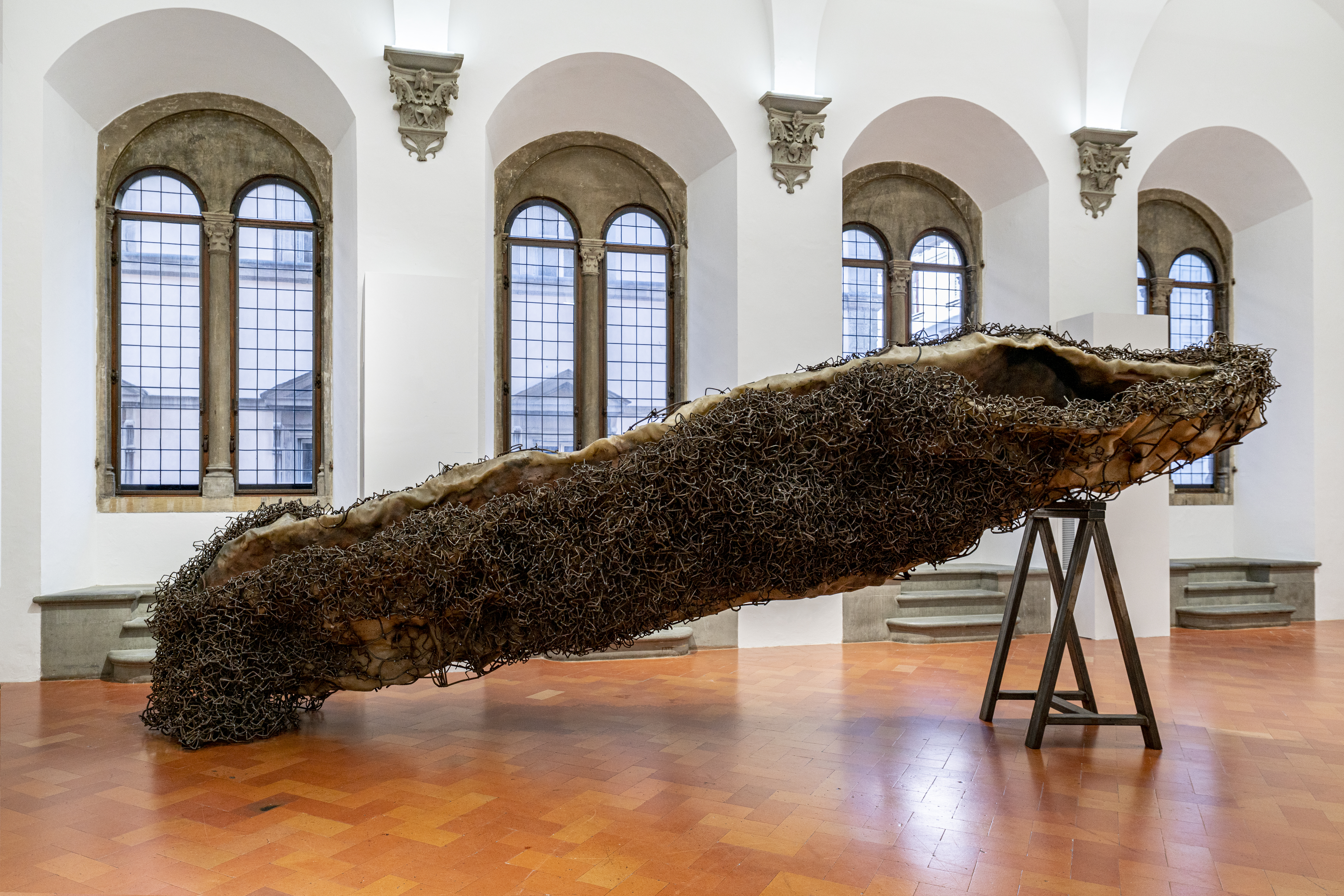 Anish Kapoor, A Blackish Fluid Excavation - photo Ela Bialkowska
Anish Kapoor, A Blackish Fluid Excavation - photo Ela BialkowskaUntrue Unreal is the title chosen for the exhibition at Palazzo Strozzi, inviting us to explore a world in which the boundaries between real and fake, reality and illusion dissolve, opening up the doors to the dimension of the impossible. Such themes are fundamental and recurrent in your works. On this occasion and in this specific historical period, do they take on new dimensions and meanings as compared with the past?
Yes, at a time of growth of ultranationalism all over the world, political pretense passes itself off as real and it is blind to history. The real/unreal and true/untrue game is a topos of our age. Here in Italy and across the world. I’d venture to say that we have lost touch with the human reality and with our companions, including the one hundred million people roaming the planet as refugees. And all this while the ultranationalists brainwash us. The Untrue Unreal today. The artists’ role, in my opinion, it to look to the unknown or the half-known. I have nothing to say. My truth is to confide in what I do not know or I know only in part. And in this, the untrue/unreal is my guide.









